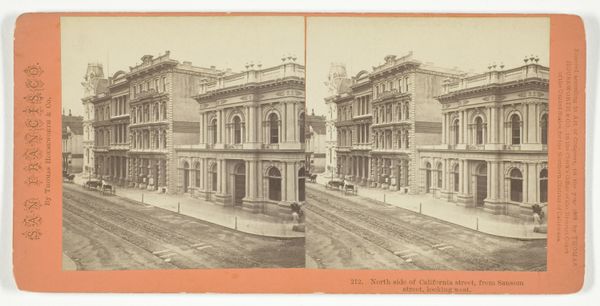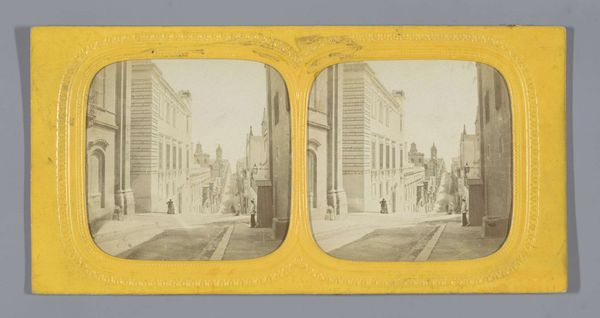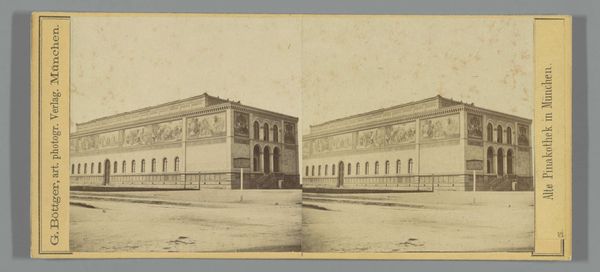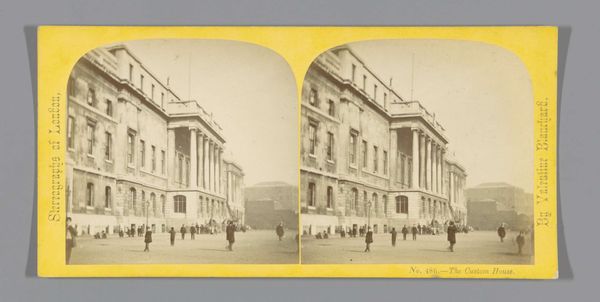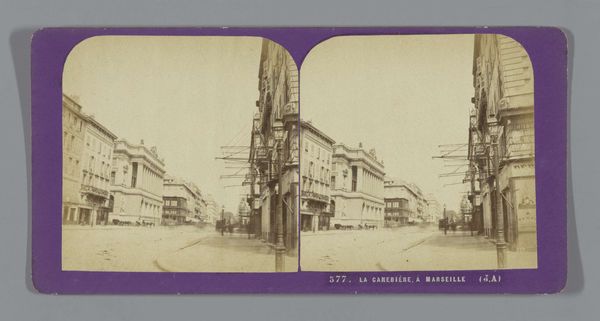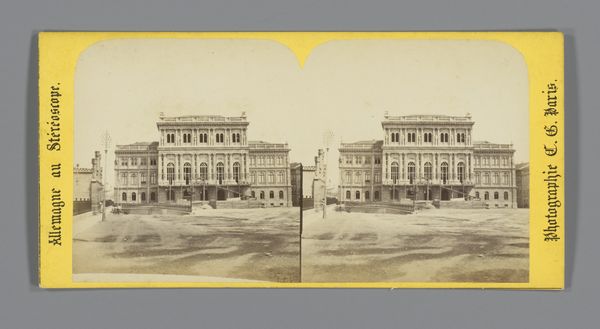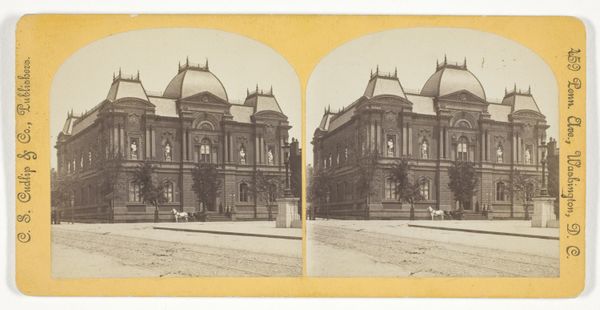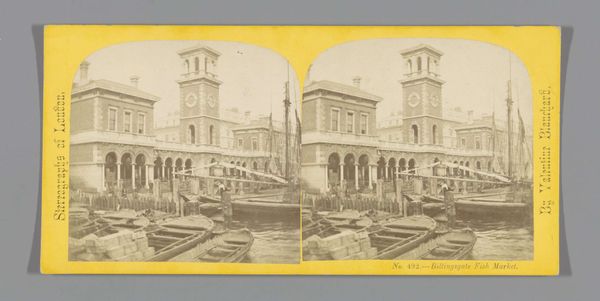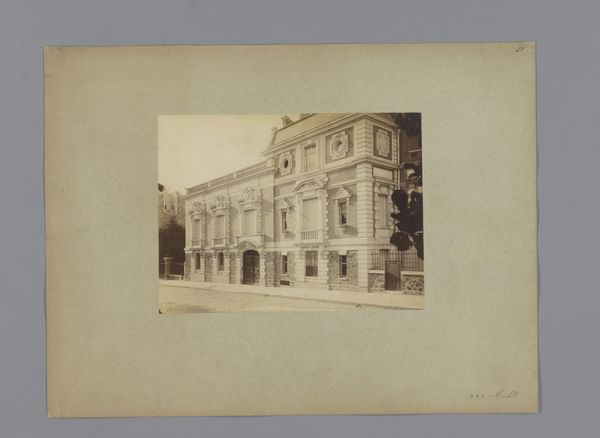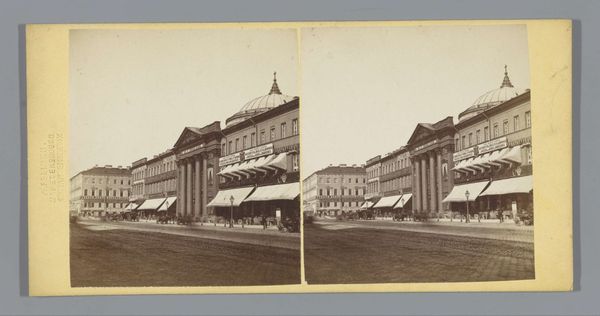
photography, architecture
#
photography
#
cityscape
#
architecture
#
realism
Dimensions: height 83 mm, width 169 mm
Copyright: Rijks Museum: Open Domain
Editor: So, this is a stereoscopic photograph from between 1866 and 1875, titled "Façade van het Gare du Nord, Parijs," by Charles Dauvois. It presents a detailed view of the train station’s exterior. I’m immediately struck by how much this architectural rendering embraces industrial progress while echoing classical grandeur. What’s your take on it? Curator: It’s fascinating to consider this photograph through a materialist lens. Think about the societal impact the train station and photography itself both represent. They both signify advancements in material production and mass consumption. Do you think the use of photography, a relatively new medium at the time, to document a train station is just a neutral choice? Editor: Not at all. The choice of photography speaks volumes. Instead of a painting, photography provided an “objective” record of modernity— the Gare du Nord here symbolizing expanding railway networks and commerce across Europe. I see what you mean, documenting material change with a product of material innovation! Curator: Exactly. This intersection highlights how technological advancements influence artistic production and perception. We need to think beyond merely aesthetic achievements of capturing realism through photography here. Let’s think more about the social and industrial impact. Editor: I see. So we should think more about the infrastructure that enabled the photo – the chemist who makes the film, the photographer's studio... Curator: Yes, all of it shapes what you see – or what Dauvois chose to show, and how they presented it. Considering the industrial processes required to produce both the station and the photograph urges us to critically examine the capitalist framework within which this art object was created and continues to exist. Editor: I hadn’t considered it in those terms, focusing instead on the image itself. But looking at it now, I see that exploring its material and historical context offers a far richer understanding. Curator: Precisely, seeing how materials and industry play a role provides critical and more nuanced views.
Comments
No comments
Be the first to comment and join the conversation on the ultimate creative platform.

